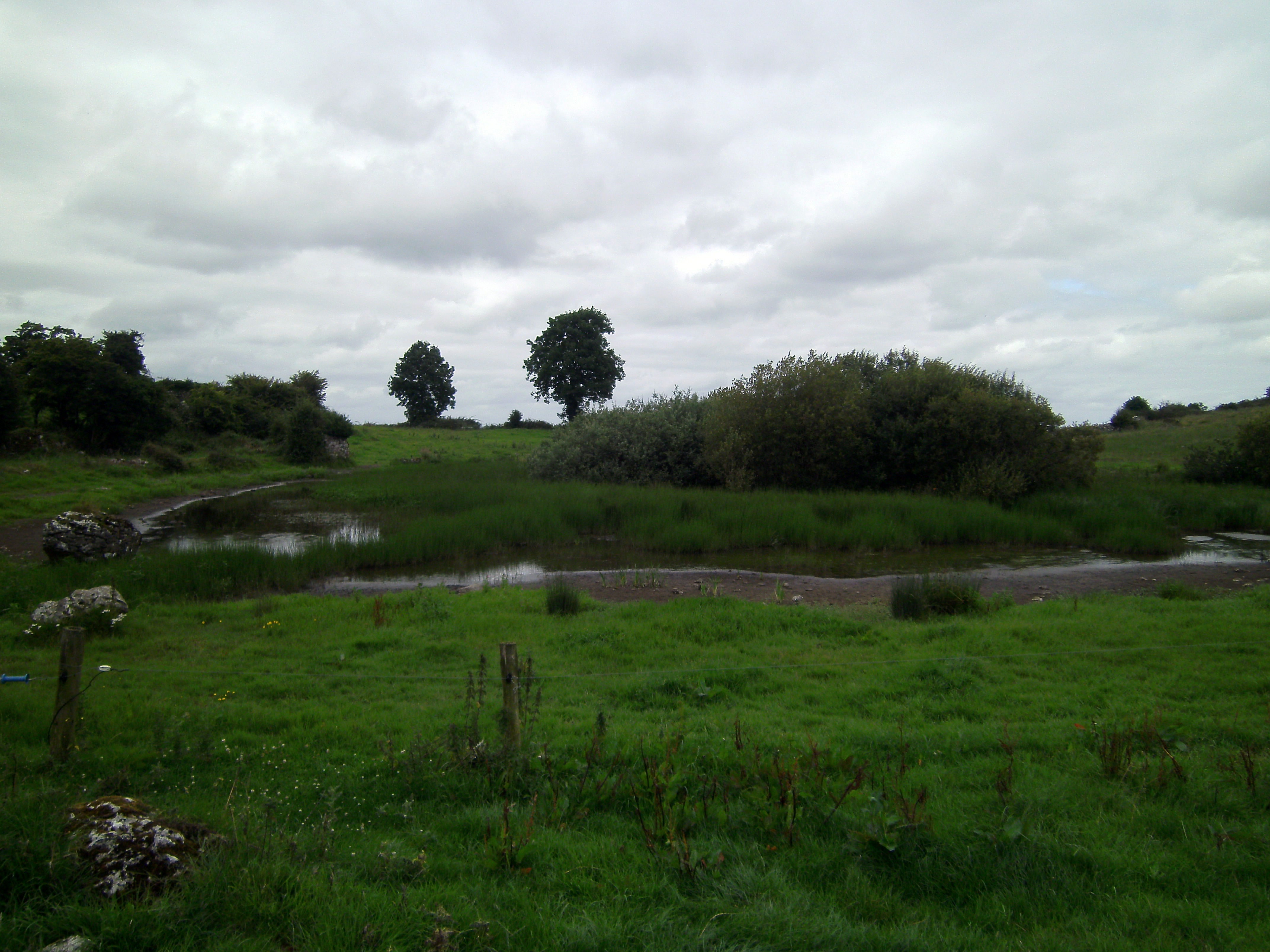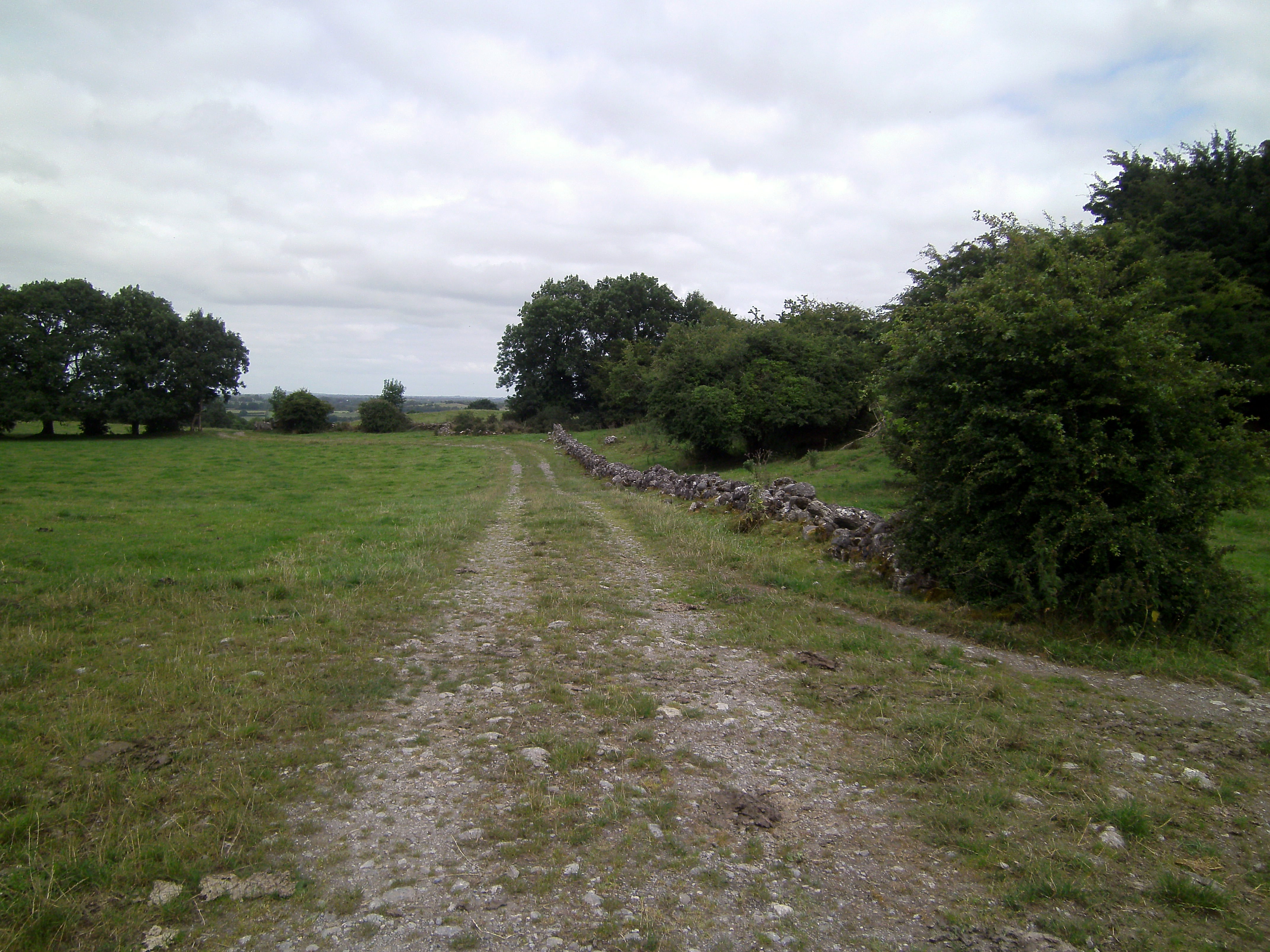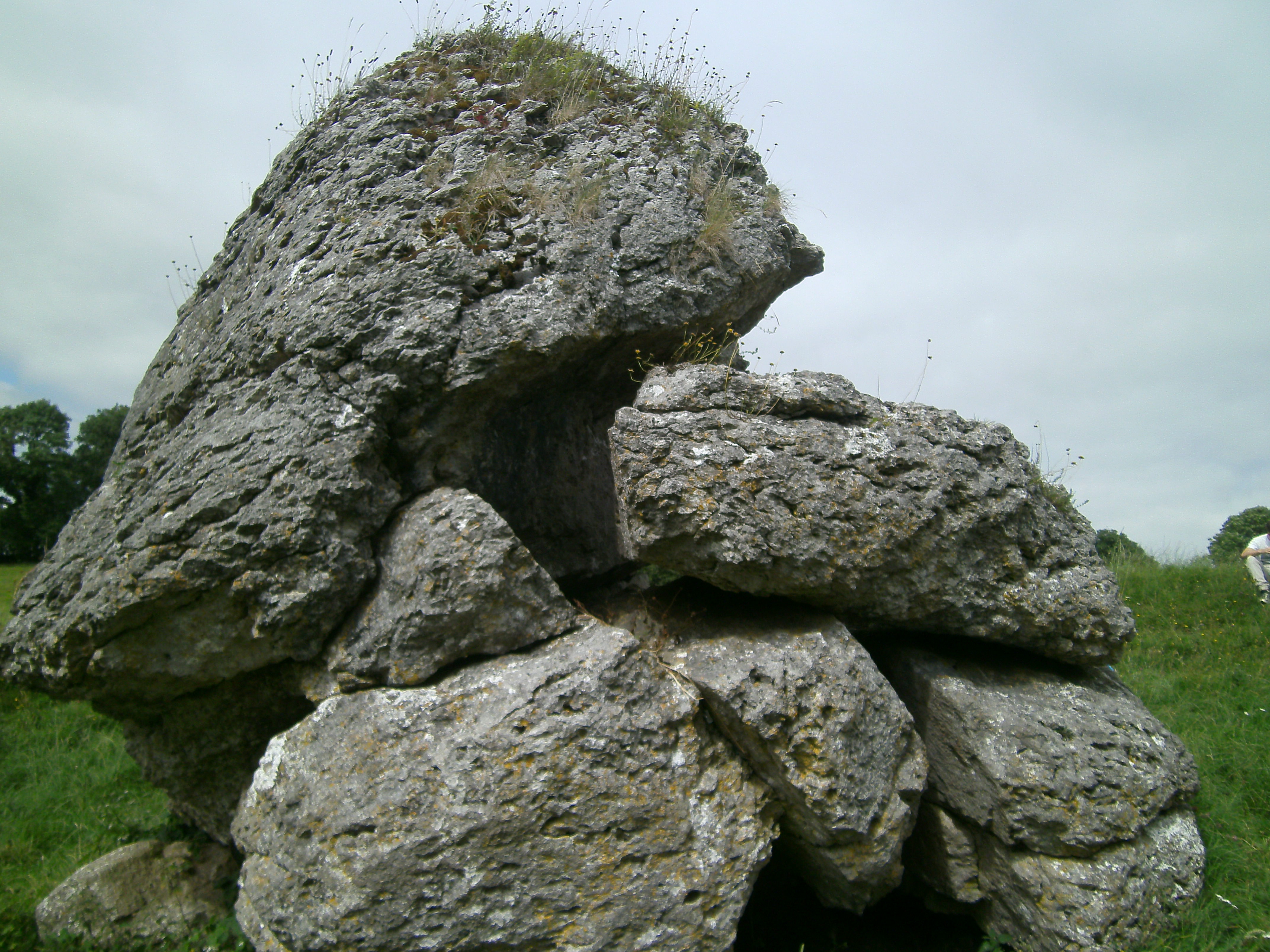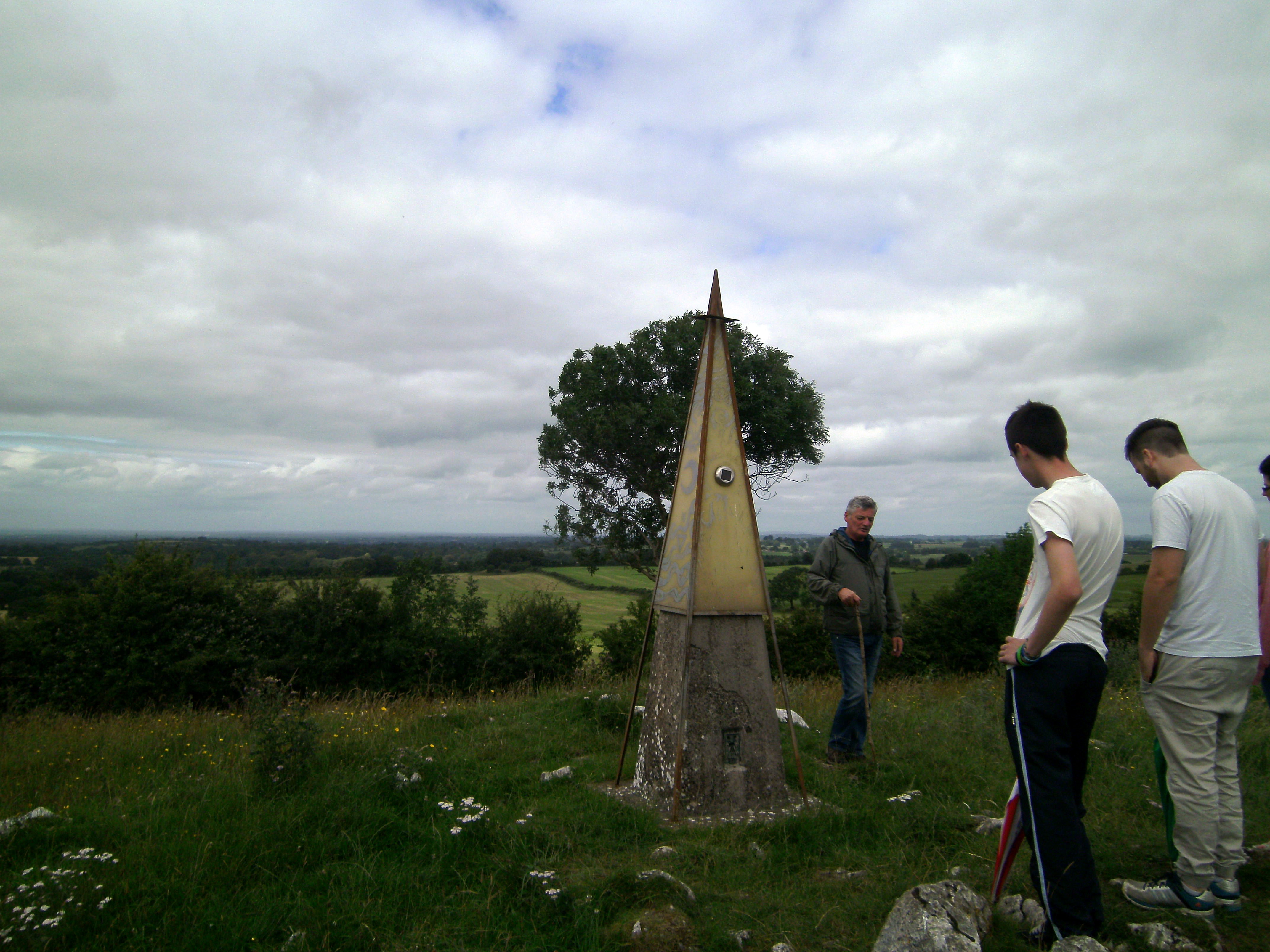Mythic memory can be reawakened, and at the core of any Visionquest lies mythic memory. By awaking our mythic memory and exercising those abilities, we can connect the now to deeper time and cosmic memories of the ancestors. This mythical concept has been found to exist in many cultures ranging from the Far East, to the native peoples of North America, the Mayans, etc. Such a complex concept cannot be mere coincidence and speaks to something deeper in our psyche and soul, and in fact transcends time itself and connects us to the ages.
More...
The Hill of Uisneach does not necessarily afford many structures to look at. Of course, it is an ancient stone fort with a labyrinth of underground tunnels and living areas, but beyond the ruins of these structures lie the deeper visions far back into the ancient history and legends of our species. The Hill of Uisneach is one of the thin places which provide a Sidhe, or portal to the “Other World.” The site is about the “now,” and the concept of space and time vs. the time and space perspective we live in day to day. (See The Source Field Investigations: The Hidden Science and Lost Civilizations Behind the 2012 Prophecies
for an excellent discussion on space/time vs. time/space.)
Before the Celts, the Tuatha De’ Dannan, (Dananns), inhabited the island of what is now Ireland. These ancient people are the spiritual ancestors of the Celts. While the Hill of Uisneach appears on the writings of Ptolemy of Alexandria in 82 CE, predating the touristy Tara, we now know that the Hill of Uisneach has a history to the deep time of the ancestors even farther back than any recorded history. Recent archaeological tests of soil from the bed of Lough Lugh on the site have indicated its presence going back as far as 8000 years.

Uisneach
Lugh was the ancient sun god and is said to have been murdered at the Hill of Uisneach and is buried here. Gazing at Lugh’s burial mound behind Lough Lugh, one of our party was able to spiritually see into the mound and saw a bright light. When we mentioned this to our guide Marty, we were surprised to discover that others have had this same vision which we had not known until we brought the experience up in conversation. Spend some time around Lough Lugh and take great care as it is a Sidhe to the Other World and the ancients have been coming here for many ages with votive offerings to Lugh.
The more famous Lia Fail (Stone of Destiny) at Tara is known as the place of coronation of the High Kings of Ireland, the kings nevertheless met at the Aill na Mireann, aka as the Catstone, or Aill na Mireann (Stone of Division), at the Hill of Uisneach. Here is the geographic center of Ireland and the intersection which defines the boundaries of the four Provinces of Leinster, Muenster, Ulster and Connacht. At this spot is also the mythical fifth province of Midhe. There still exists the remains of the ancient walking path which leads from Tara to the Hill of Uisneach.

The Catstone marks the burial place of the goddess Éiriu, from whom Ireland (Éire) is named. As Lugh is the sun god, Ériu is the goddess of the earth and the rocks are said to be her bones, the rivers her veins, and the earth her flesh. Do spend sufficient time at the Catstone as it is another thin place and in fact the Sidhe to the mystical and conceptual Other World and fifth province of Midhe.
Here at the Catstone, feel the sensation that time stands still as you are in a place of space/time vs. time/space. It was not coincidental that our guide, Marty, kept asking if we had time to stick around as he knew we were on our way to Dublin. In fact, we sacrificed the rest of that day and evening which were planned for Dublin because the experience at the Hill of Uisneach was simply too valuable to

Western cultures tend to think of only four directions and those being north, south, east and west. Yet, there is a fifth direction of the “here” and the “now.” As an interesting coincidence (noting that nothing is simply a coincidence), even the Mayans on a faraway continent also share the concept of a fifth direction. Mayan language and glyphs represented east as red, west as black, north as white, and south as yellow. The here and now, the earth, was represented by the Mayans as green. Now can we really argue that this is mere coincidence, that the Catstone is the burial place of the goddess Ériu who is the earth goddess, and Ireland is known as the emerald Isle, and yet the Mayans faraway represented the fifth direction, the earth, as the color green? (See http://www.famsi.org/research/hopkins/DirectionalPartitions.pdf)
While sitting at the Catstone, observe how its divisions were used to mark the boundaries of the four provinces. Also, note the open space near the center which represents Midhe and illustrates that Midhe is a direction and a concept, and not a place in the physical realm. Closing my eyes and placing my hands upon the rocks, I could visualize deep time and all of the ancestors who have come to this sacred place before, as well as all of those will come after me. For now, time was standing still and I felt truly here in the now and the present even though I could sense the past as well as the future. I then had an awareness that there was more to the Catstone, and when I opened my eyes could not help but notice the weathered patterns in the limestone. Although I could not comprehend the language, I had the strong awareness that the markings resembled lobes of a human brain, and though the ages, all history and knowledge was encoded here by the earth. Truly, from this place, one can travel in the four physical directions as well as the fifth, spiritual direction of the now.
After spending time at the Catstone, head back up to the Hill of Balor, which is the highest point on the Hill of Uisneach. The energy here is blocked and conflicted, and we had the view it is because of a structure (abomination) placed here by the British. The structure has been placed on an ancient burial mound which also contains the foundation ruins of an old church reported to have been built by St. Patrick. We were intrigued to hear from Marty, our guide, that St. Patrick was eventually banished from this place.

From the top of the Hill of Balor, one can look out 360 degrees and see all four provinces of Ireland. It is very windy up here and I had an experience very similar to what I had in Sedona, Arizona on Airport Mesa, another vortex or thin place. Here as well, the wind spoke to me and revealed itself as the river of time, and as I stood here, I was in the fifth direction, the now, where time stood still; I was in space and not time. Looking beyond, I could see the earth, the hills, and the trees in the distance. Looking forward with the direction of the wind, there was a 180 degree span of choices and directions to take in life. Looking back into the wind, were the same visions which represented all of the choices made in the past which brought me to this place and the now. Time is endless, and we can all choose which space we wish to occupy at any point in that river of endless time.
In the center of the hill is an ancient fire pit. Excavations back in 1927 revealed this pit to contain a substantial deposit of ash so we know that the site has been in use for many ages. Fires lit here can be seen from all of the four provinces of Ireland and during the Fire Festival of Bealtaine, halfway between the spring and summer equinox, all fires would be extinguished in Celtic Ireland plunging everything into darkness. Then, the fire would be lit here and could be seen throughout Ireland and each of the provinces would then light their fires. Here again, there is more than coincidence as anyone of the Catholic faith will draw the parallel to Easter Vigil Mass where all of the lights are extinguished, and a fire lit outside the church which is then used to light the Easter candle and candles held by all of the congregation. As our guide Marty mentioned to us many times this day, nothing is mere coincidence.
After spending a few hours on the hill, be sure to stop by the visitor centre for a cup of tea!
Don't miss the Hill of Uisneach, @ the centre of it all in #irelandsancienteast
